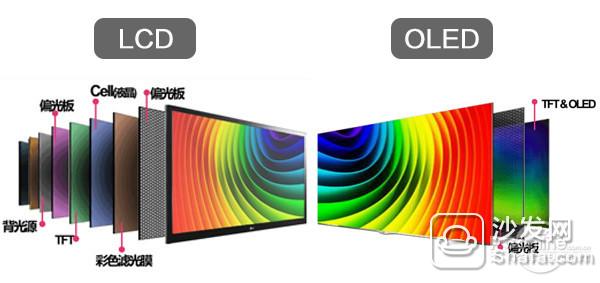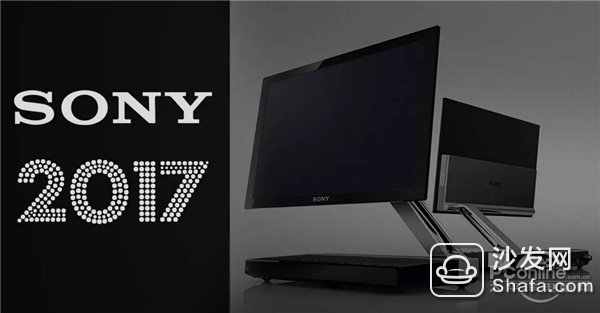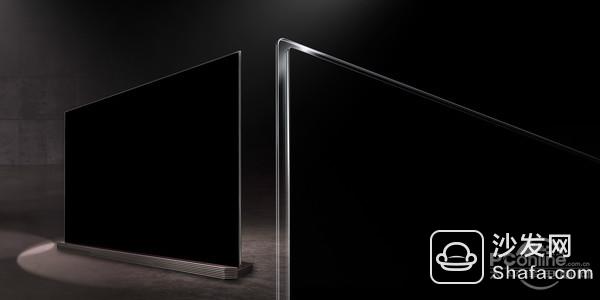[PConline News] After large-scale OLEDs have accumulated power for many years, they finally showed a booming growth trend in 2016. This year, domestic OLED TV sales are expected to reach 300,000 units, a year-on-year increase of 7 times. Recall that at the 2013 CES, Japanese and Korean manufacturers such as LG, Samsung, Sony, and Panasonic displayed their OLED TVs in high-profile, which was the most prosperous year for OLEDs. However, at the time, OLEDs still had many problems to be solved, so in 2013, when they turned around and stayed in the big screen OLED camp, they only had LGs. Until recent years, OLEDs that have been hailed as "Future Display Technologies" have only been picked up by more manufacturers.

This also reflects from the side of the OLED technology in recent years, the trend is very clear, thick and thin can finally be fully fired. The issue of yield that the industry is most concerned about has also been greatly improved this year. The current manufacturing yield of the 55-inch 1080P Full HD OLED TV panel has exceeded 85%, and the yield of the 4K Ultra HD OLED TV panel also reached 80%. As the yield rate continues to increase, and as more and more upstream and downstream companies join the cycle, the price of OLEDs will decrease.
How good is OLED?The history of liquid crystal technology we are familiar with has been more than 50 years. The reason why it still occupies most of the TV market is inextricably linked to the low-cost costs and mature industrial chain brought about by the infinite maturity of its technology. From the display technology point of view, LCD technology still has many congenitally deficient places, such as displaying pure black and dynamic response. The OLED technology just makes up for these inherent deficiencies of the liquid crystal technology. Through the self-luminous method, the screen structure is simpler, and the dynamic and light control performance is better than the liquid crystal technology.

So on the wearable device and the VR all-in-one machine, almost all use the OLED screen. The huge smartphone market is also gradually being washed by OLED screens. More companies have already transferred LCD investment to OLEDs.
At CES2016, LG introduced a 2.57mm-thick OLED TV, which has aroused industry admiration; at CES2017, LG will likely launch a thinner wallpaper TV.

Recently, a research team consisting of the Korean Institute of Science and Technology (KAIST) and the material technology company Kolon Glotech made breakthroughs in the flexible OLED display. They developed an OLED display that can be worn on the body. . Later you can use your clothes to tell the girl.
In terms of viewing experience, OLED brings a very real look and feel to people, because it will also be immersed in reality. I remember that last year Xiaobian went to attend an OLED TV Extreme Star Show held in Tianhe City, Guangzhou. The quiet blackness that LCD TVs did not have was thoroughly demonstrated. Many OLED TVs were stitched together to form a video wall. The rich colors emerged without any interference. In the all-black environment, almost no TV was found, leaving only the picture itself.

In addition, under the support of HDR technology, OLEDs have also greatly improved the brightness of LCDs. The dark part performs even more profoundly without losing details. The bright part has a very high brightness but is not white and very transparent. The layering of the screen is enhanced a lot and brings more details of the picture quality. A simple metaphor: a fireworks display on a night, the nights displayed by LCD TVs may not be dark enough, and there are not many levels of highlights when the fireworks bloom; but OLED TVs with HDR technology can both The night is thoroughly deep, and the details of the colors of the fireworks can be fully expressed. The darkest places and the brightest places have more levels of distinction. With the advent of HDR technology, OLEDs have more possibilities.
What will happen to the OLED market in 2017?The domestically produced OLED is in full swing
The most exciting event that took place at the end of this year was the first China-developed OLED TV developed by Skyworth, BOE (BOE) and Hass Strategic Cooperation. We all know that in order to rapidly popularize OLED, LGD took the lead in establishing the China OLED Industry Alliance last year, and Skyworth Group was elected as the chairman unit of the Alliance. Although we have domestic OLED TVs, we have not been able to use domestically produced screens. This joint feat of BOE and Hass,

Breaking the Chinese local color TV industry lack of OLED upstream panel independent intellectual property rights, long-term South Korea upstream manufacturers to control the hardware technology dilemma, Skyworth and the OLED industry are great news.
At the press conference, Liu Yuzhi said: The Chinese TV industry has missed the good time of CRT and LCD. Today, Skyworth has captured the good time of OLED display technology, and will surely seize the new display technology in the future. China's self-made domestic industrial chain has gradually matured. This time into the industry, very timely into the highest point of the industry, and the industry is basically maintained in parallel, then there will be opportunities for further development to lead the industry's development.

Skyworth S9D Wins 2016 OLED TV Innovation Product Identification
In addition, at the 2016 China OLED Display Industry Summit, President Liu Qizhi also attended the speech “The Next Door, OLED!â€. OLED products are contenders, concave, convex, double-sided, flexible, China's independent research and development of OLED TVs, and so on, showing a good picture of prosperity.
It can be seen that Skyworth is full of confidence in the development of domestic OLED industry as a whole. With the gradual acceptance of the OLED panel in the mobile phone market, domestic panel makers such as BOE, Tianma, and Guoxian Optoelectronics have already laid out small-sized OLED screens as early as possible. With the iteration of the TV market, large-size OLED panels will also become the focus of domestic panel makers. After all, China, whether it is a mobile phone or a television, has become the world's largest market. The volume of consumption and the speed of iterations are enough to allow domestic manufacturers to have a chance to do their best.
Sony OLED TV Comeback
At CES 2013, Sony, Samsung, and LG all showed their OLED TVs in high-profile, but OLED TVs in the blink of an eye were abandoned by Sony and Samsung. Although Sony's OLED monitors have always been the leader in the professional field, they are consuming. The market has always made the powder powder hungry and thirsty. The latest news shows that after a lapse of four years, Sony will launch two 4K OLED TVs at the 2017 CES show. In fact, in recent years, Sony TV was forced to walk down the price altar. It is also the constant compression of prices. Occasionally, the old flagship will hit the new flagship. This time, 4K OLED will come back to bring Sony to the price. And the bi-directional peak of picture quality?

OLED Association President Barry Young confirmed that Sony will release 4K OLED TVs. Barry Young said that Sony will launch at least two 4K OLED TVs with sizes of 55 inches and 65 inches next year. The display panel will ship in the middle of next year. It is reported that Sony's TVs will support HDR technology.
The panel used by Sony 4K OLED TVs should not be accidentally generated by LG. Together with Sony's accumulated image processing technology for more than a decade, the two "Wang Fry" should be able to play a good hand. It is reported that the price of 55-inch OLED TV is estimated to be US$ 1999 (RMB 14,000 yuan), and 65 US dollars is expected to be US$ 2999 (RMB 21,000 yuan). Compared with LG's current high-end OLED models, the price is similar. I hope that Sony can grasp the OLED outlet and recreate the amazing product.
LG turns to OLED
LG has apparently tasted the sweetness of OLEDs. Large-size OLED panels are almost the only ones, but LG is in its heyday and is also very worried. According to foreign media, LG will make some major adjustments to its display business. The main direction is to carry out structural adjustments for the relevant departments. The focus of all categories will be on OLED production lines, including smartphones, smart wear, and televisions. .

LG 2.57mm Ultrathin OLED TV
The TV department will integrate LCD and OLED business. This LCD technology with more than 50 years of history may soon disappear on LG's TV. As the leader of OLED, LG has been making every effort to promote OLED technology for many years. Whether it is opening all patents related to OLED panels until 2020, or setting up the "China OLED Industry Alliance" in China, LG is destined to be in this section. On the road, we are determined to continue.
With the advancement of technology, the price of OLED panels will also gradually decline. In the production of the 10th generation plant, the cost of 65-inch OLED TV panels will drop by 35%. This will be a very impressive figure. LG has occupied more than 20% of the global OLED high-end color TV market. In the Chinese market, the market share exceeds 10%. After all, domestic high-end consumption is still a minority, but as OLED panel prices fall, OLED will become more and more popular.
Summary: OLED technology has become an overwhelming wave. The mature technology and broad market of LCD TVs are very profitable. However, when we welcome the next display technology outlet, we need companies like hungry wolf to eat. We are full of hunger for innovation, dare to explore, trial and error, and will only bring rich dividends in the next wave of technology. profitable.
Surveillance Camera,Wifi Camera Indoor,Outdoor Wifi Ip Camera,Ptz Wireless Camera
Shenhzhen Tongheng Weichuang Technology Co., Ltd , https://www.thwclte.com